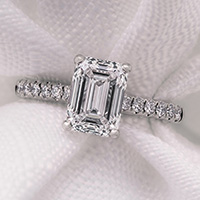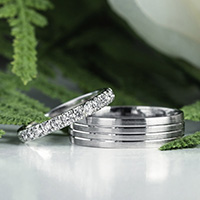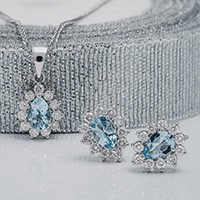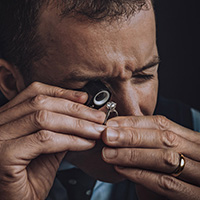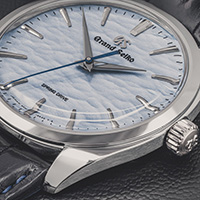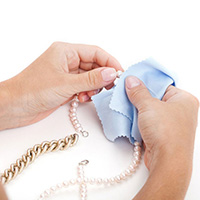- Home/
- Watch Water Resistance - What You Need To Know | James Porter & Son
Water Resistance Guide
In this guide
Demistifying Water Resistance
As I’m sure you can imagine, water is a wrist watch’s worst nightmare. The words ‘water-resistance’ are thrown around a lot when you’re looking for a prospective shiny new wrist watch! But, we’re here to tell you that you don’t have to be a keen diver to understand the difference in levels of water-resistance, and how best to care for watches when they do come into contact with water.
For some watch brands, even the tiniest drop of H20 in the wrong place can cause catastrophic damage. So, we’ve demystified the different scales you’ll often see describing a watch’s water resistance, and also given tips on how to protect and maintain your watch to ensure it keeps ticking!
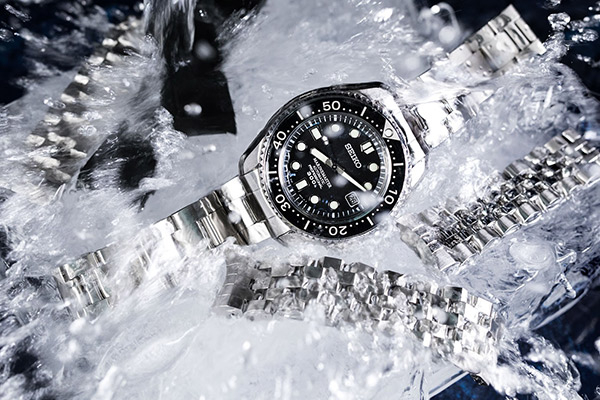
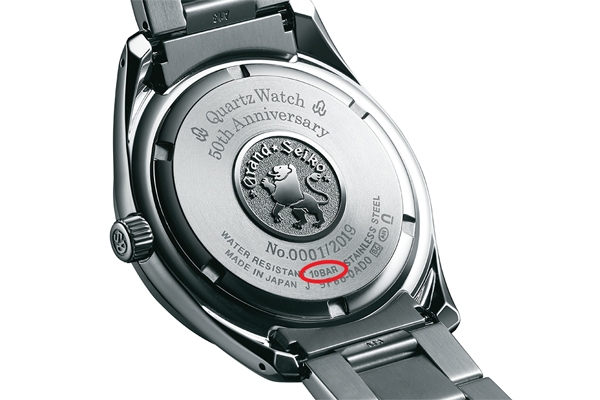
What Does Water-Resistance Actually Mean?
Here’s the definition of water resistance; water resistance is the measure of how much pressure a watch can withstand underwater. Often denoted in units of bar, atm, or depth (m), the number given to a watch is the unit of pressure a watch can withstand in a static pressure test under laboratory conditions that simulates water pressure.
What is the difference between ‘bar’ and ‘atm’?
The atm unit corresponds to pressure at sea level which is known internationally as an average because the pressure at sea level changes. A bar is another unit of measurement belonging to the metric system. All you need to remember is that: 1 bar = 0.98 atm = 10m
One of these water-resistance units will usually be stamped on the back of your watch case or written on the face. To help make reading these units simpler, we’ve outlined the different levels you’ll see below, and what activities each one is most suitable for.
Watch water resistance table
| Water resistance rating | Accidental splashing from washing hands, rain etc. | Showering or swimming | Swimming or snorkelling | Swimming, snorkelling, skin diving | Scuba diving |
|---|---|---|---|---|---|
| 'Water Resistant' or 30m (3bar) | ✔ | ✗ | ✗ | ✗ | ✗ |
| 50m (5 bar) | ✔ | ✔ | ✗ | ✗ | ✗ |
| 100m (10 bar) | ✔ | ✔ | ✔ | ✗ | ✗ |
| 300m (30 bar) | ✔ | ✔ | ✔ | ✔ | ✗ |
| 500m (50 bar) | ✔ | ✔ | ✔ | ✔ | ✔ |
Wearing a watch will affect its resistance
When being worn, a watch will almost always be in motion on your wrist. Believe it or not, this contributes to the pressure exerted on a watch so bear this in mind if you’re serious about the amount of pressure your watch needs to withstand.
For example, a typical watch could be marked with a water resistance depth of 30 metres. So, naturally you might assume that jumping off the middle or top plank of an average diving board would be fine. However, there’s quite a high chance that the pressure change that the watch would be subject to when you hit the water would push the capabilities of the gaskets to their limits, and cause the watch to start leaking.
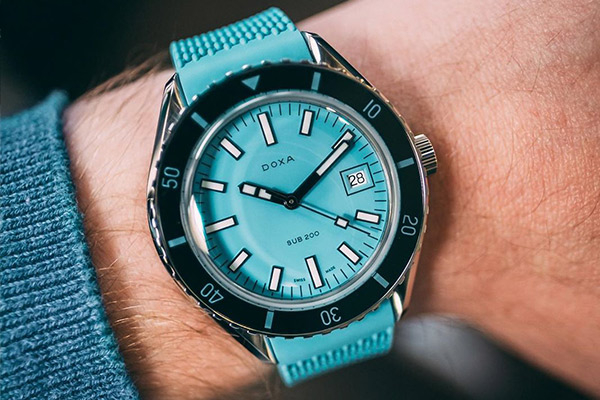
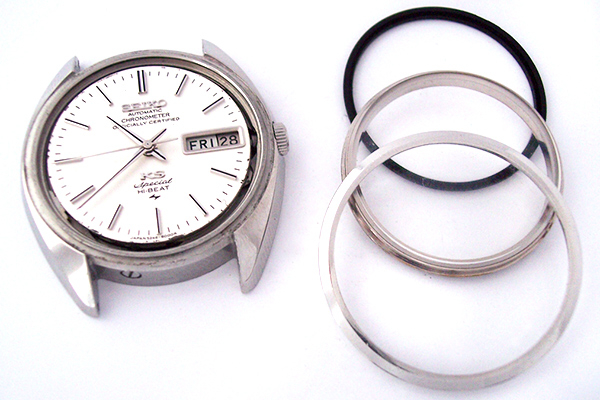
How is a watch made waterproof?
To protect the inner workings of a watch from the outside elements, a rubber or silicon hoop, called a ‘gasket’ is used as a seal. The gaskets sit inside the case and crystal, and around the stem, crown, pushers and correctors (all the pieces that are exposed), forming a seal around the important mechanisms within.
Over time, and after repeated exposure to water, the gaskets will begin to dry out and lose their elasticity, which is when the water-resistance will begin to decrease - this is why regular testing is crucial to your watch maintenance, as gaskets can be checked and replaced easily before the damage is done.
What’s The Difference Between Waterproof and Water-resistant?
You will rarely see a watch described as ‘waterproof’, as this implies that under no circumstance will water be able to permeate. Modern technology can mean that watches can withstand more and more pressure while still operating, however there will always be a limit to its resistance, and even the tiniest gap in the gasket seal can cause damage. All watches are therefore technically only water-resistant, never truly waterproof.
Maintaining a water-resistant watch
Before you submerge your watch in water, you must ensure the crown is fully pushed in or screwed down - this is where the gasket seals, and so if not properly closed, water will be able to enter the watch mechanism. You should also never adjust the bezel, twist the crown, or press the pushers whilst underwater, as this will break the gasket seal.
To keep your water-resistant watch ticking, regular maintenance is essential. It’s advisable to take your watch to a specialist at least once a year to re-test the water resistance level, and ensure all the gaskets are sealed. Over time these will need to be replaced and lubricated to ensure the water-resistance, and so regular testing will ensure the delicate mechanisms within your watch will not become damaged.
Salt water can corrode these important elements more quickly, and so after swimming or diving in sea water, it’s advisable to rinse your watch in fresh water and dried thoroughly to ensure no salt crystals remain.
If you wear your watch frequently in sea water, it’s important to get it tested and re-sealed a few times a year, to ensure no parts have been corroded which could cause permanent damage.
Leather is an organic material, and therefore much more susceptible to moisture and temperature changes. If your watch has a leather strap, you should never submerge it in water, and if it does come into contact with any moisture (such as rain splashes, sweat, or perfume), the strap should be dried immediately with a soft absorbent cloth to prevent any further damage.
Watches designed to be worn in water will always have straps made of metal or rubber, which can withstand these changes in environment. If you notice any damage to the strap, it’s important to take it to a specialist as soon as possible.
Perfumes, soaps, cosmetics and cleaning products can all be corrosive to the delicate elements within a watch, and therefore it’s important to remove your watch when it could be exposed to these - for example showering, washing up, or applying make-up. If your watch does come into contact with these, it should immediately be rinsed off with fresh water and dried as quickly as possible with a soft cloth.
Dramatic changes in temperature, for example going into a sauna, skiing, or just visiting a much warmer or colder climate can cause the gasket seals to expand or contract and create an opening, which will affect the water-resistance. Avoid wearing your watch in extreme conditions if possible, and avoid adjusting the watch crown/bezel if you do need to wear it to ensure no water droplets manage to get inside.
Even the smallest amount of water can cause major damage to a watch mechanism. If any water does accidentally find its way into the watch, you should try to dry it out as quickly as possible - on a radiator or above a lamp. It is important to take it to a specialist as soon as possible, who will have the right tools to open, clean, and replace any components damaged by the water.
Get in touch
Get in touch
Contact us by phone at 0141 221 5855 or by email at [email protected]. We love our work and will be happy to help you with your query, we can also book a convenient time for a consultation to find the exactly what you need.
 Back to top
Back to top
 Basket
Basket





 0141 221 5855
0141 221 5855 Send us an email
Send us an email






 Secure payment methods
Secure payment methods


